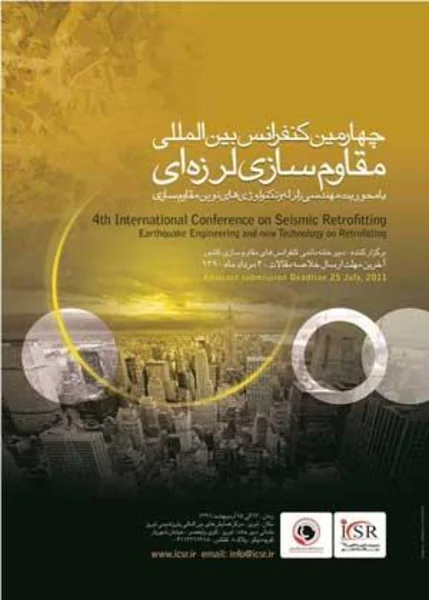-
retrofitting lessons learnt from fukushima nuclear plant accident
جزئیات بیشتر مقاله- تاریخ ارائه: 1391/01/01
- تاریخ انتشار در تی پی بین: 1391/01/01
- تعداد بازدید: 624
- تعداد پرسش و پاسخ ها: 0
- شماره تماس دبیرخانه رویداد: -
it was concluded at the conference on world energy outlook 2011 in london, that global warming is the main threat for future generations. it is predicted that earth’s temperature may rise by 6.4 ◦c in the next century compared to only 0.74◦c in the past century. maria van der hoeven, director and representative of international atomic energy agency (iaea) at this conference stated that iea insists that governments of the world invest in technologies which are co2 efficient. in a report published by iaea called ‘climate change and nuclear power 2011’ concluded that nuclear power can battle the future climate change. iran is one of the few fortunate countries in the world which has access to vast uranium deposits while successfully has developed technology to enrich its uranium to produce nuclear rods to fuel its required nuclear energy for its future generations, however, considering that the existing bushehr power plant was designed about half a century ago, it would be useful to learn from fukushima plant disaster. after two weeks of frequent seismic preshocks, on 11th march 2011 at 2.46 pm a magnitude 8.9 earthquake strike japan's north-eastern coast, triggering a devastating tsunami and a series of aftershocks, the reactors automatically shut down with the earthquake. at 3.15pm a tsunami of 15m height which was twice the height of sea ward walls followed the earthquake directly from the east, the back up generators which provided water to stop nuclear rods from melting could not operate as they were submerged under water as they were located in the basement. tokyo electricity company (tepco), the owner of the plant, had already been warned by the scientists that the seaward walls were not tall enough and required retrofitting, but this was ignored, as the result the tsunami had over passed the wall1. on 12th march a state of emergency was declared about 170,000 people were evacuated from 18 km zone around the fukushima plant. on17th march japanese helicopters dump tons of water over the plant in an attempt to cool reactors, but had no success. on 22nd march 2011 japan expanded the exclusion zone around the plant and asked a further 130,000 residents to evacuate. the paper investigates the retrofitting options which could have been applied to fukushima plant to prevent the catastrophe which has resulted in possible contamination of 200 km2 of north east of japan for the next two decades.
مقالات جدیدترین رویدادها
-
استفاده از تحلیل اهمیت-عملکرد در ارائه الگوی مدیریت خلاقیت سازمانی و ارائه راهکار جهت بهبود
-
بررسی تاثیر ارزش وجوه نقد مازاد بر ساختار سرمایه شرکت های پذیرفته شده در بورس اوراق بهادار تهران
-
بررسی تأثیر سطح افشای ریسک بر قرارداد بدهی شرکت های پذیرفته شده در بورس اوراق بهادار تهران
-
بررسی تأثیر رتبه بندی اعتباری مبتنی بر مدل امتیاز بازار نوظهور بر نقد شوندگی سهام با تأکید بر خصوصی سازی شرکت ها
-
تأثیر آمیخته بازاریابی پوشاک ایرانی بر تصویر ذهنی مشتری پوشاک ایرانی (هاکوپیان)
-
بررسی ارزیابی کارایی مصرف انرژی از نظر سوخت و برق ایستگاه های پمپاژ آبیاری بارانی مطالعه موردی
-
بررسی و مقایسه ی معماری های امنیتی رایانش ابری در راستای ارائه راهکارهایی جهت توسعه سازمان های امنیتی
-
مطالعه آزمایشگاهی رفتار برشی اتصالات پیچی در سازه های فولادی سرد نورد شده
-
بررسی تطبیقی عوامل موثر بر مدیریت پورتفولیوی پروژه ها مطالعه موردی: شرکت مهندسین مشاور آمایش و توسعه شرق و شرکت مهندسین مشاور طوس آب
-
use of ultrasonic waves in sub-cooled boiling
مقالات جدیدترین ژورنال ها
-
مدیریت و بررسی افسردگی دانش آموزان دختر مقطع متوسطه دوم در دروان کرونا در شهرستان دزفول
-
مدیریت و بررسی خرد سیاسی در اندیشه ی فردوسی در ادب ایران
-
واکاوی و مدیریت توصیفی قلمدان(جاکلیدی)ضریح در موزه آستان قدس رضوی
-
بررسی تاثیر خلاقیت، دانش و انگیزه کارکنان بر پیشنهادات نوآورانه کارکنان ( مورد مطالعه: هتل های 3 و 4 ستاره استان کرمان)
-
بررسی تاثیر کیفیت سیستم های اطلاعاتی بر تصمیم گیری موفق در شرکتهای تولیدی استان اصفهان (مورد مطالعه: مدیران شرکتهای تولیدی استان اصفهان)
-
چگونگی مدیریت مغالطه توسل به منبع ناشناس در سازمان ها
-
بررسی میزان کاربرد مدل های طراحی آموزشی در ارزیابی دوره های آموزش الکترونیک در نظام آموزش عالی ایران
-
بررسی نقش تعدیل گر ارتباطات سیاسی بر رابطه بین ریسک سقوط قیمت سهام و هزینه سرمایه در شرکت های پذیرفته شده در بورس اوراق بهادار تهران
-
cost and time interaction behavior on construction materials procurement and execution processes in infrastructure projects
-
the impact of information technology on corporate communications department of the department of education in district 3 of tabriz




سوال خود را در مورد این مقاله مطرح نمایید :